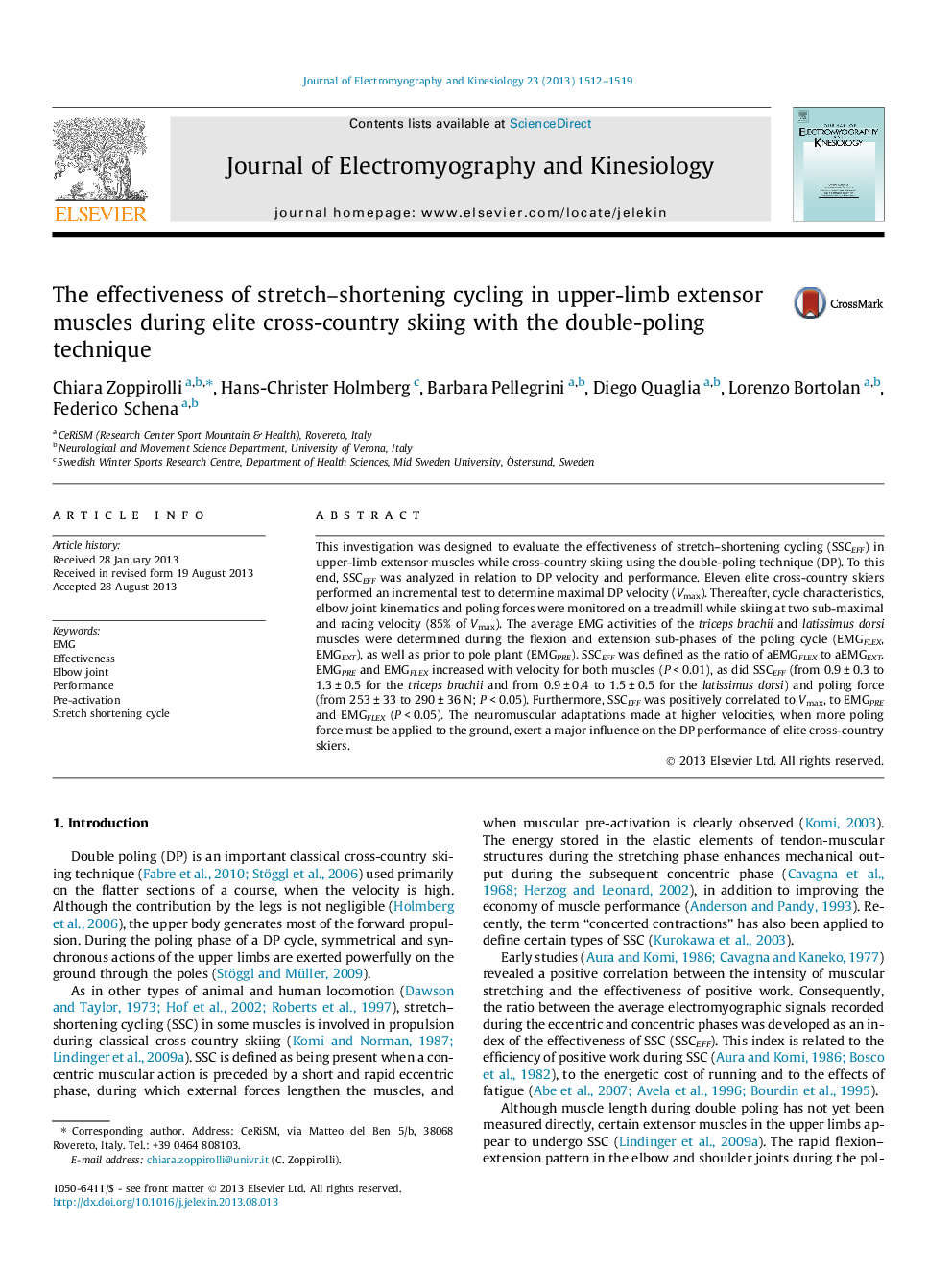| Article ID | Journal | Published Year | Pages | File Type |
|---|---|---|---|---|
| 4064834 | Journal of Electromyography and Kinesiology | 2013 | 8 Pages |
This investigation was designed to evaluate the effectiveness of stretch–shortening cycling (SSCEFF) in upper-limb extensor muscles while cross-country skiing using the double-poling technique (DP). To this end, SSCEFF was analyzed in relation to DP velocity and performance. Eleven elite cross-country skiers performed an incremental test to determine maximal DP velocity (Vmax). Thereafter, cycle characteristics, elbow joint kinematics and poling forces were monitored on a treadmill while skiing at two sub-maximal and racing velocity (85% of Vmax). The average EMG activities of the triceps brachii and latissimus dorsi muscles were determined during the flexion and extension sub-phases of the poling cycle (EMGFLEX, EMGEXT), as well as prior to pole plant (EMGPRE). SSCEFF was defined as the ratio of aEMGFLEX to aEMGEXT. EMGPRE and EMGFLEX increased with velocity for both muscles (P < 0.01), as did SSCEFF (from 0.9 ± 0.3 to 1.3 ± 0.5 for the triceps brachii and from 0.9 ± 0.4 to 1.5 ± 0.5 for the latissimus dorsi) and poling force (from 253 ± 33 to 290 ± 36 N; P < 0.05). Furthermore, SSCEFF was positively correlated to Vmax, to EMGPRE and EMGFLEX (P < 0.05). The neuromuscular adaptations made at higher velocities, when more poling force must be applied to the ground, exert a major influence on the DP performance of elite cross-country skiers.
